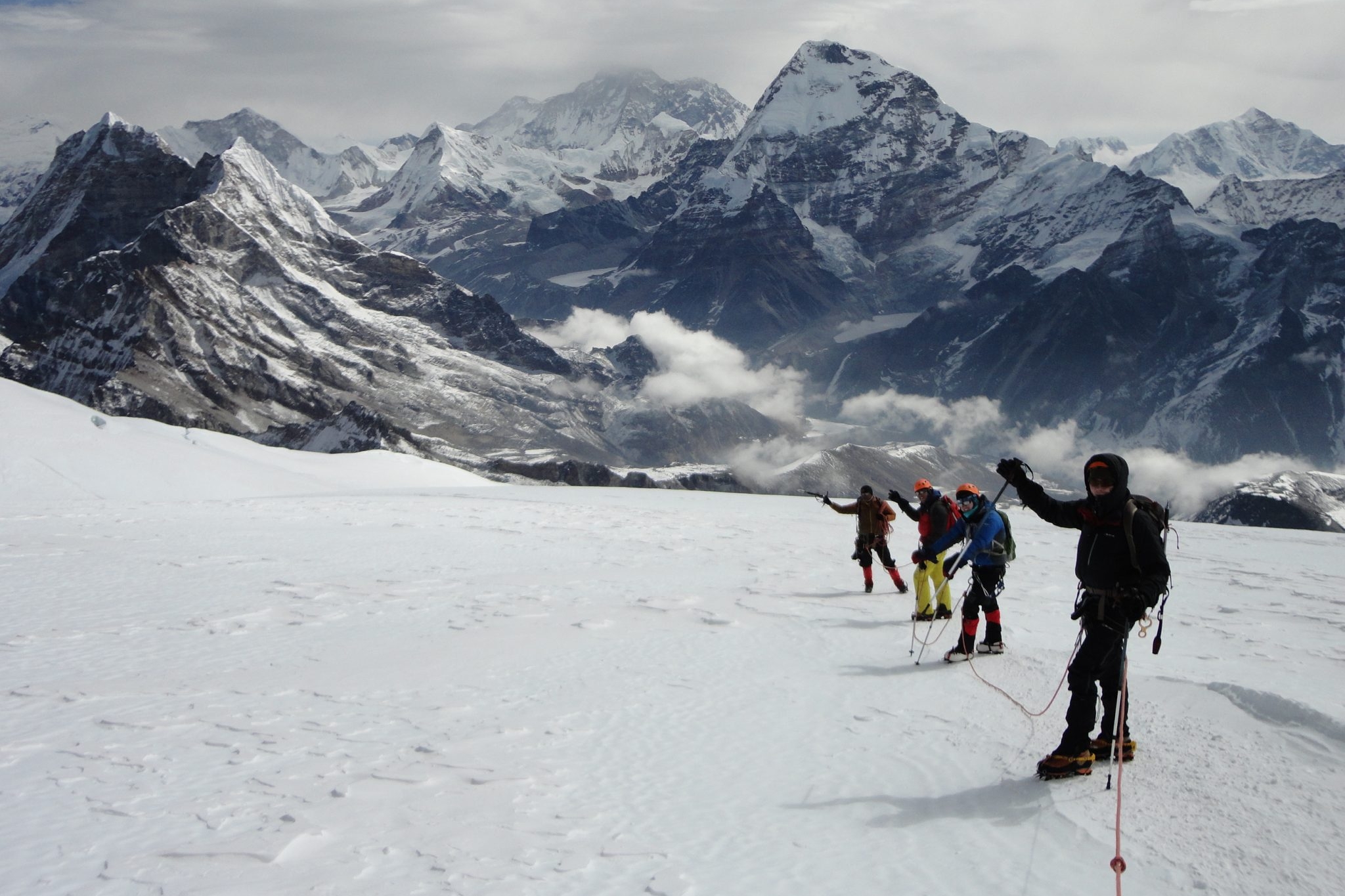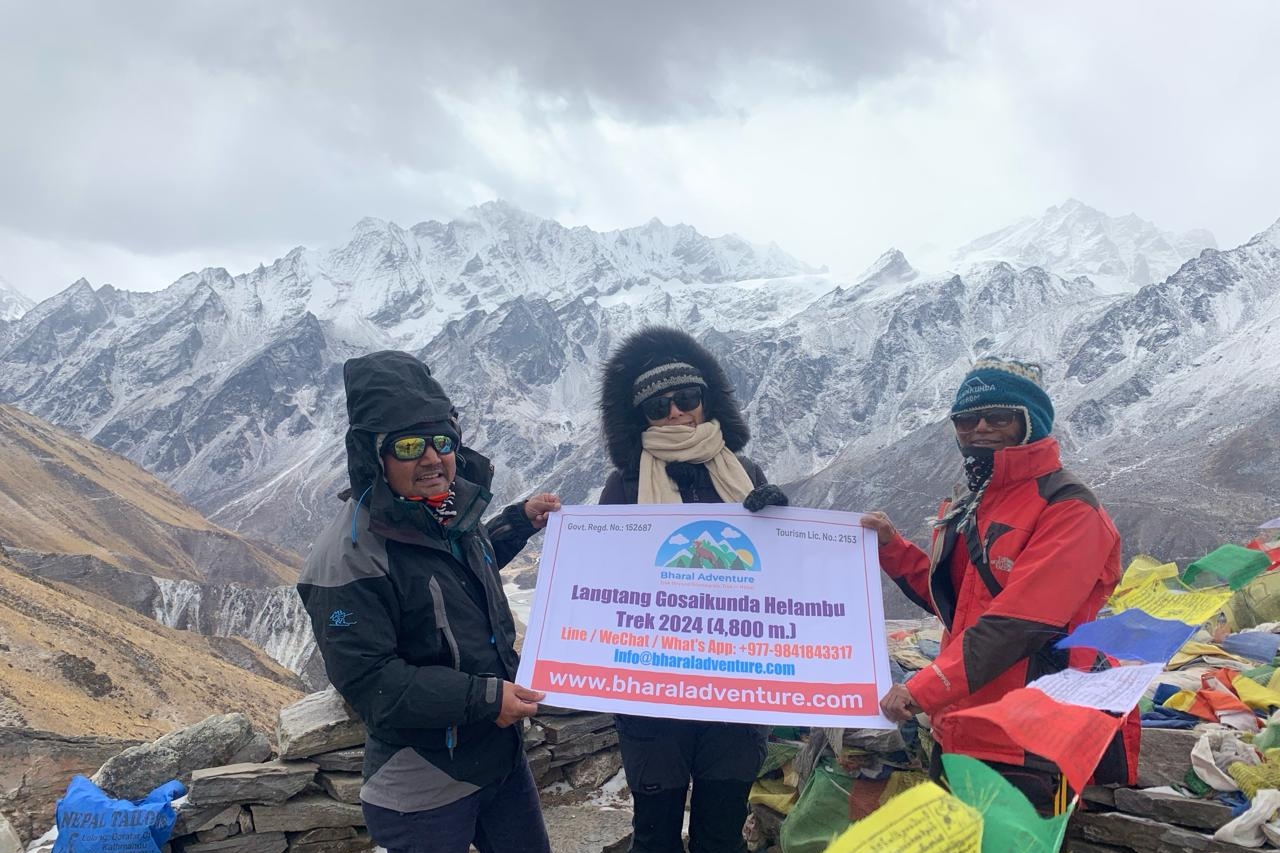

A representative from Bharal Adventure will pick up the guests at the airport and escort them to their hotel. They will be explained about the program for their journey, however, no activities are planned for the day. Nevertheless, an evening stroll could be arranged if the guests show an interest.
A guided tour around the historically and spiritually significant landmarks in Kathmandu will be scheduled after breakfast. These landmarks constitutes of Pashupatinath Temple, Swayambhunath – the Monkey Temple, Boudhanath and Kathmandu Durbar Square where you could enjoy the artistic palace, art, culture, paintings and history of ancient medieval Nepal. In the afternoon, pre-trip discussion session will be arranged enabling the interaction between the guests, trek leader and crew members.
We will start an around eight hour drive to Besisahar early in the morning. It is the point from where we will start our trek. Lunch will be served on the way which will be accompanied by the small villages and fast changing landscapes, views of the mountains and the hills. We will stay at Besisahar for the night.
Crossing over a few suspension bridges, waterfalls and several up and downhill walks across rice fields and subtropical forests, we will encounter many small villages on the way until we ascend to Bahundanda (literally meaning hills of the Brahmins) where we will stay overnight.
After completing our breakfast, we start to descend through amphitheatre-shaped rice terraces passing across a steep vertical cliff, lush forests and small diverse hamlets. We then begin walking up after crossing a suspension bridge over the Marshyangdi River and reach Jagat where we will take a break for lunch. Walking further along the rocky trail for one and half hours, we will arrive at Chamje which will be our night’s stop.
Crossing yet another suspension bridge over Marshyangdi River just after leaving Chamje, we will enter into Manang district. We walk further uphill to reach a tal (pond) and pass few corn fields on the way. Barley and potatoes fields then welcome us until we pass through bamboo and rhododendron forests. As we cross the pond, we will come across a river and continue walking through across the cliff right above the river which will now take us to Dharapani by late afternoon.
Fifth day starts with trek to Chame followed by a quick breakfast. The trail ascends along the mule track through fir forest following the river amidst the highest oak and maple trees. The stunning views of major Himalayan peaks such as Lamjung Himal, Annapurna II and Annapurna IV shall accompany the journey that comes to an end for the day at Chame. We also come across small hot springs where we can beat the anxiety of the trek so far.
Walking through a steep narrow valley offers the first glace of Paungda Danda rock face, a dramatic curved rock face rising 1,500m above the river. This place also offers tremendous views of Annapurna II to the south and Pisang Peak to the north east. Descending down to the Manang Valley floor takes us to Pisang from where a half an hour climb will take us to Upper Pisang.
This day will be spent on acclimatization for which the local villages will be explored. Also, we will be checking and setting up our gears that will be used for climb which will begin from the next day. We will be enjoying the views of all the Annapurnas, Gangapurna and Tilicho mountains.
On the tenth day of our expedition, we will start the walk towards Pisang Peak Base Camp ascending through sparse woods and pastures to a Kharka at the height of 4,380m. Since this place is considered ideal for setting up the Base Camp, we shall put our tent here for the night.
Walking for about four to five hours, we reach our high camp standing at the height of 5,400m after climbing to a shoulder on the south west ridge. The high camp is graced with snow from the end of November to the end of March. We will camp here for the night.
It is on the twelfth day of our expedition that we will summit the Pisang Peak. We walk through the well defined ridges from the high camp to the final steep snow slop to reach the summit. Since the trek is more technical, our guide will fix the rope and lead you up to the successful summit of the Pisang Peak. After capturing the beautiful and thrilling moment in our memory and cameras, we will descend down to the base camp.
Two routes go to Manang from Pisang of which we follow the one passing through Upper Pisang via Geru as it guarantees the outstanding views of Mt. Annapurna, Pisang Peak and others. Walking near Manang makes us feel the cold and dry climate. A short visit to Barge Monastery, the biggest monastery in the district is organized so as to help the travelers forget the climatic condition in the serene environment of the monastery.
The trail crossing over a stream and climbing to a village of Tenki above Manang is followed which continues to go up out of the Marshyangdi Valley turning northwest up the valley of Jarsang Khola. From here, the trail follows this valley northward passing a few pastures and a scrub of juniper trees as it steadily gains elevation passes further closer to the small village of Ghunsa, a cluster of flat mud roofs just below the trailhead. It now goes through the meadows where horses and yaks graze crossing gradually a small river through a wooden bridge and traversing through an ancient Mani wall in a pleasant meadow progressively reaching another small village of Yak Kharka where the trek ends for the day.
On this day, the trek to the foot of Thorong Phedi Pass, a small busy settlement catering to the needs of tired trekkers and climbers, is made. This point is used by some trekkers as a base camp. Although some trekkers attempt a hike to the High Camp on the very day of their arrival here, Bharal Adventure does not advice that because it understands that a sound sleep here is more important and helpful rather than a risky sleep in higher altitude at the High Camp.
The climb to the pass begins early in the morning. Although the ascent is very steep in the initial stage, the peak becomes sloppier as the climb proceeds through the rocky ridges up to the top of the pass at 5,416m. The 360 degree panorama of the snow capped peaks extending northwards into Tibet is a breathtaking sight along with the peaks of Annapurna range and the unfathomable Kali Gandaki gorge staring right in front of us. From here, the trail descends steeply down to Muktinath which is a reverent pilgrimage sight for both Hindus and Buddhists pilgrims at the same time being a home to many ethnic Tibetans and holy Buddhists.
We walk for about half an hour from Muktinath to arrive at Jharkot, a rich village with culture and tradition similar to Tibet. From here, we observe the views of the varied landscapes and combination of dry hills and green fields. After enjoying the view for a while, we descend further down until we reach Kagbeni.
Walking through the sand bar of Kali Gandaki River, we descend down to Jomsom. On our way, we can give an hour to look for fossils on the riverside as we walk since finding a natural fossil from the Kali Gandaki River is believed to bring good luck in your life. However, we need to walk past the area before the wind starts blowing in Kali Gandaki Valley. Walking further along the trail will take us to Jomsom, district headquarter of Mustang. In the afternoon, a visit to Ecological museum of Jomsom could be arranged where you can learn about the old traditional culture, flora and fauna of the valley.
The early morning flight from Jomsom will bring us to Pokhara just after breakfast, accompanied with the views of the gorge between two huge mountains, Annapurna and Dhaulagiri. Resting for a while in a comfortable hotel room in Lakeside, we shall utilize the afternoon exploring the beautiful Pokhara valley strolling along the banks of Fewa Lake or spending some quality time into one of the clubs with live music playing. Also, boating could be done on the lake or an hour’s walk could be taken to the World Peace Pagoda.
After breakfast, 200 km drive to Kathmandu will be taken through the highway with scenic mountains, rivers, farmlands, hills and small villages. As we arrive in Kathmandu, you will be taken to your hotel for rest. Shopping for souvenir could be done or the rest of the evening could be spent leisurely resting or strolling around the area. In the evening, farewell dinner will be hosted by Bharal Adventure to congratulate you on the successful completion of your vacation.
If you have booked further trips with us, we may proceed to it but if you have a flight back home, one of the representatives of Bharal Adventure will escort the guests to the airport approximately three hours before their scheduled flight.
The summit of Pisang Peak offers stunning panoramic views of the Annapurna range, including Annapurna II, Annapurna III, Gangapurna, and other surrounding peaks.
The duration of Pisang Peak climbing varies depending on the chosen itinerary. On average, it may take around 18 to 20 days, including trekking to and from the peak.
The itinerary for Pisang Peak climbing often includes a trek in the Annapurna Circuit, acclimatization days, and the ascent of Pisang Peak itself. The trek usually starts and ends in Besisahar or another trailhead in the Annapurna region.
Pisang Peak is considered a moderate to technical climb. It involves steep sections, rock climbing, and snow and ice slopes. Climbers should have prior mountaineering experience and be comfortable with the use of climbing equipment.
Yes, a climbing permit is required for Pisang Peak. The permit can be obtained through the Nepal Mountaineering Association (NMA), and it's important to check the latest regulations and permit fees.







